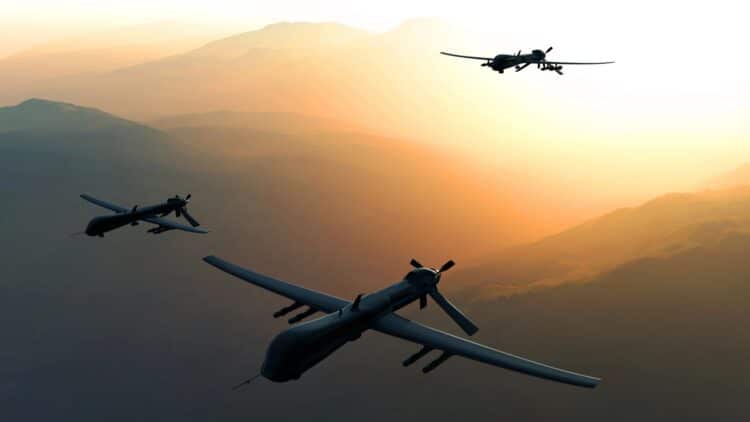A new scenario is emerging in the European defense arena, especially in recent days. Following repeated drone violations in the airspace of EU member states, defense ministers have advanced the idea of a project to build a “drone wall” along the continent’s eastern border, specifically in Ukraine. This initiative, which previously seemed like a distant proposition, is now becoming a reality and a priority in security relations, given growing threats.
How the drone wall project will work
This initiative, supported by Ukraine, is not just a military response, but rather a measure that represents an important strategic shift in the bloc’s security, especially given growing insecurity. The idea of creating this drone barrier arose after a series of recent incidents involving attacks and intrusions by Russian drones and aircraft, which violated the skies not only over Ukraine but also over NATO countries.
In just one month, countries such as Poland, Romania, and Estonia have reported widespread cases of intrusions into their airspace, putting Europe and the EU on high alert for the need for enhanced protection. Recently, even Copenhagen Airport had to suspend its operations, albeit for a few hours, after the presence of suspicious drones in its territory, which reinforced the sense of vulnerability.
When security stops being theory
This incident at the Danish airport showed how this issue isn’t just a military issue; it also has a civilian impact. There were numerous flight cancellations, delays, and risks to critical infrastructure, highlighting how the problem can impact beyond the eastern border. We are living in a technological war scenario, and therefore any location considered important, such as an airport, power plant, or communications center, could become a target or suffer disruptions due to drones.
The EU’s response to this scenario is a practical necessity. By investing in a real-time monitoring system, it will have more rapid reaction mechanisms, and with this, the bloc aims to protect not only soldiers but also ordinary citizens in their daily lives, who are ultimately impacted.
Costs, policy and cooperation
The concept behind this drone wall project involves a network of sensors, radars, and interception systems, which will be distributed over more than 2,000 kilometers, spanning territories from Finland to the Black Sea, passing through countries on NATO’s eastern flank. This project represents a joint effort that includes Estonia, Latvia, Lithuania, Poland, Romania, and Bulgaria, as well as Ukraine. Denmark also recently joined the initiative, further expanding the project’s reach.
The key strategic difference behind this project is its integration, which involves real-time communication between those involved, rather than adopting a stance of each country acting in isolation. This is beneficial because it allows for a much more agile response to any identified threat within these countries’ territories.
For the European leaders of the countries involved in this project, the message they want to convey is that when it comes to security, it cannot be fragmented. In a scenario where Russia constantly tests NATO’s limits, the unity of these countries is the only answer and can ensure that the bloc is prepared to respond.
What comes next
The “drone wall” is more than just a technology or security project; it represents a new symbol of the new phase on the European continent, where collective security is a priority. Currently, attacks can come from nearly invisible technological equipment, hence the need for countries to adapt.
Whether to protect common spaces such as airports, borders, or citizens, the European Union is willing to act and contain the risk of attack. The challenge now is to put this idea into practice, transforming it into reality quickly and efficiently. The continent is beginning to forge a path toward greater trust among its countries, sending a clear message that they are prepared to defend their territory.


